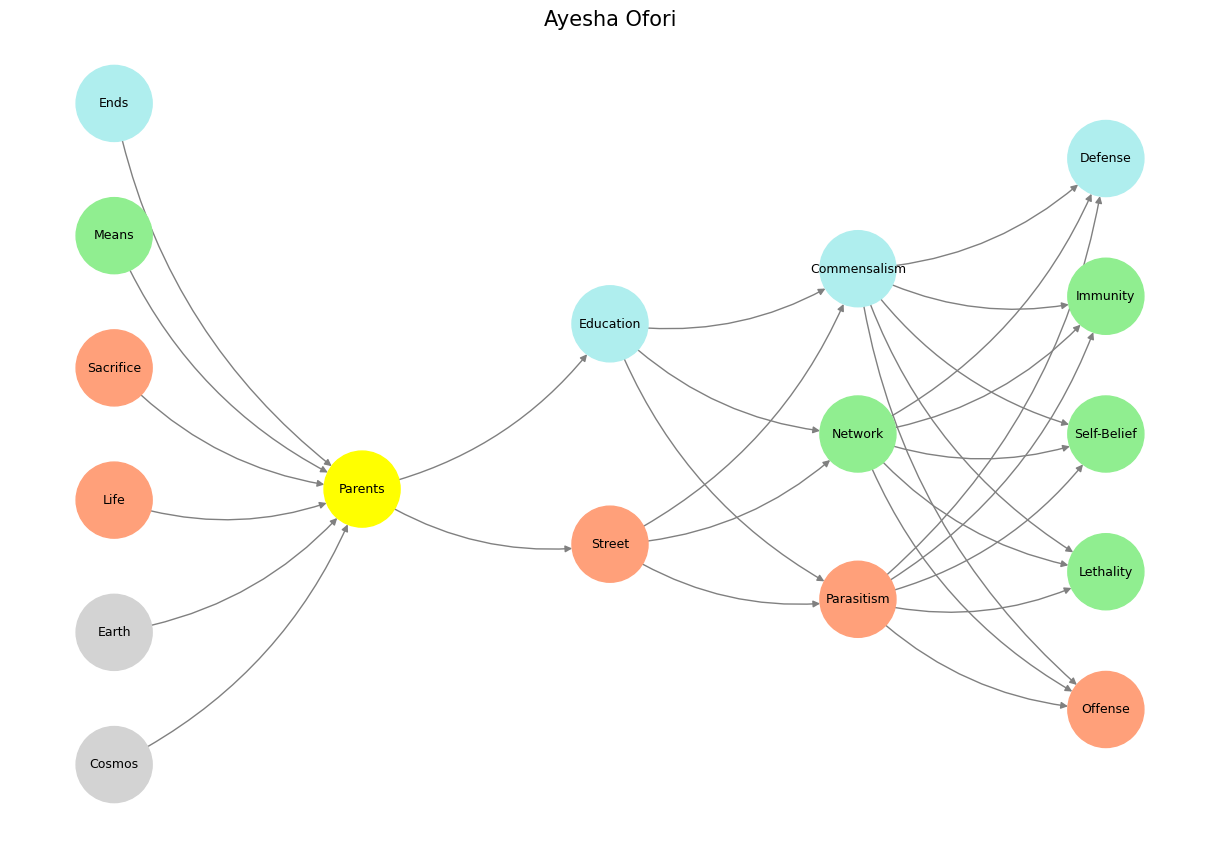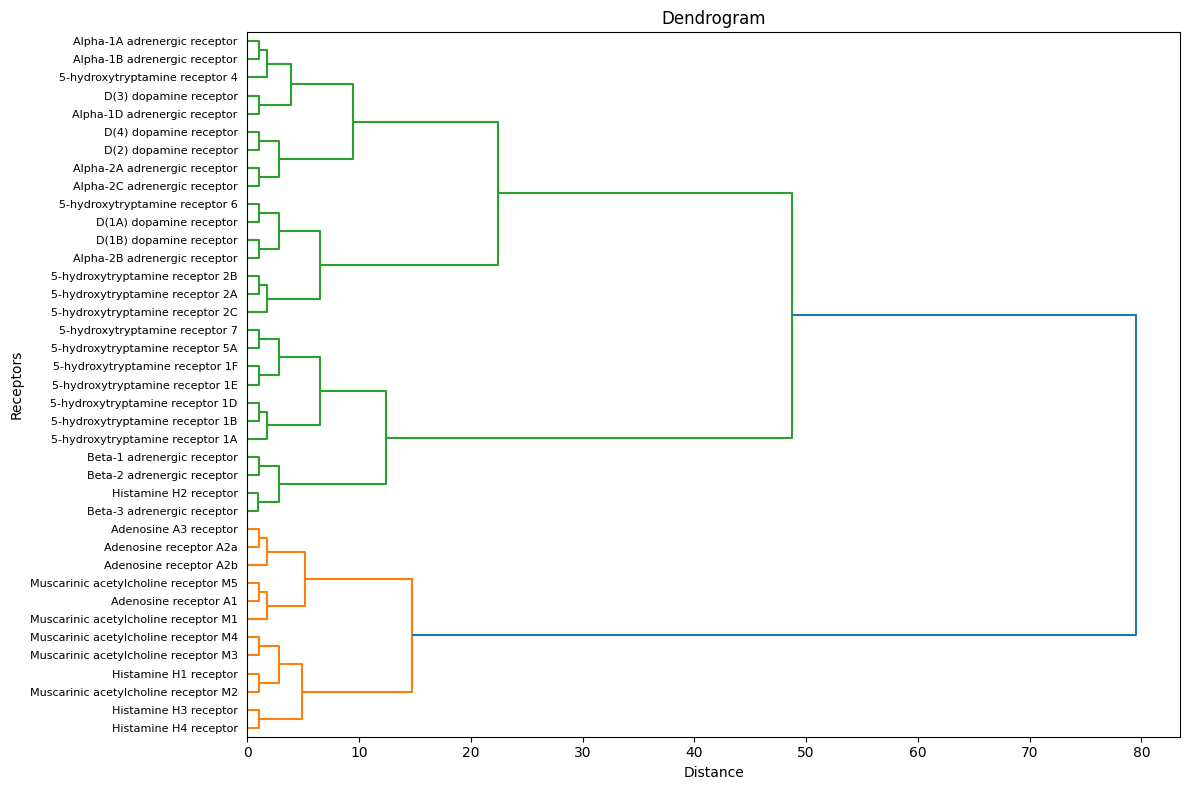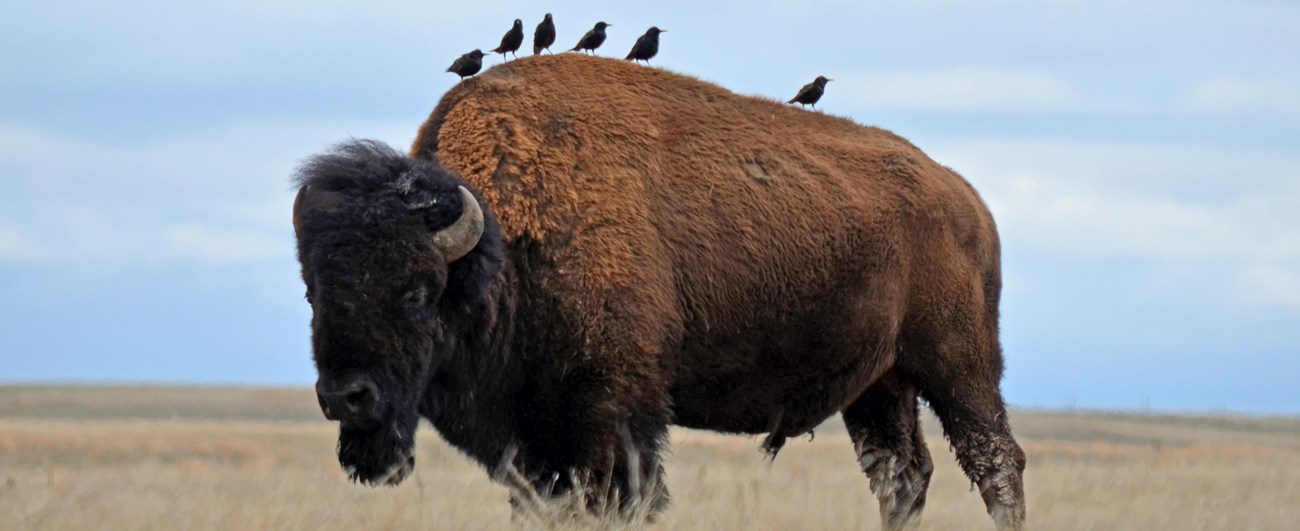Cunning Strategy#
A proposed scheme, in which histamine, acetylcholine, and adenosine are considered adversarial, iterative, and cooperative, and serotonin, dopamine, and noradrenaline align as cooperative, iterative, and adversarial, presents a fascinating lens through which to interpret the evolution of neurochemical systems. This framework hints at an underlying logic, not just of biochemical function, but of emergent strategies in evolution—strategies that may parallel broader dynamics of competition, negotiation, and harmony within the natural world. While speculative, such an arrangement invites compelling narratives about time, emergence, and evolutionary timelines.
Narrative of Evolution and Emergence#

Fig. 10 Competition (Generativity) & Feedback (Exertion). The massive combinatorial search space and optimized emergent behavioral from “games” among the gods, animals, and machines are the way evolution has worked from the beginning of time. Peterson believes reinforcement learning through human feedback (RLHF- a post-training twitch) removes this evolutionary imperative.#
Let us first consider the adversarial, iterative, and cooperative triad of histamine, acetylcholine, and adenosine. These molecules, ancient in evolutionary terms, could represent the most foundational strategies of biological survival. Histamine, which mediates inflammatory responses and vigilance, embodies an adversarial stance: it is a molecule of defense and alertness, a biochemical signal that something in the organism’s environment is wrong or threatening. Acetylcholine, by contrast, sits at the heart of neuromuscular and autonomic functions—its role iterative and transactional, bridging input (sensory stimuli) and output (muscle contractions). Adenosine, often associated with sleep and energy homeostasis, emerges as a cooperative force, signaling the need for rest and collaboration between systems to sustain life. Together, these three might represent the basic survival strategies of early multicellular organisms: react to threats (histamine), coordinate immediate responses (acetylcholine), and negotiate long-term energy stability (adenosine).
The second triad—serotonin, dopamine, and noradrenaline—presents a more sophisticated evolutionary layer. Serotonin, widely recognized for its role in mood regulation and homeostasis, embodies cooperation at a higher level than adenosine. It facilitates harmony not just within systems but between individuals, a molecule of social stability in more complex organisms. Dopamine, the molecule of reward, iteration, and learning, introduces the idea of feedback loops: try, adapt, and refine. It reflects the iterative processes of trial and error that underpin both behavioral flexibility and evolutionary innovation. Finally, noradrenaline, with its role in arousal and fight-or-flight responses, reintroduces the adversarial edge, this time at the service of more complex and dynamic challenges than histamine faced in primitive organisms. These three chemicals could reflect the strategies of more advanced organisms, navigating not just survival but social, emotional, and intellectual landscapes.
A Timeline of Complexity#
If we align these triads on a timeline, an evolutionary narrative emerges. The histamine-acetylcholine-adenosine triad represents an early stage of emergence, in which life’s primary challenges were survival in an unpredictable and often hostile environment. These molecules, while still central in modern biology, carry the hallmarks of ancient strategies: their roles are immediate, rooted in homeostasis and reflexive action.
The serotonin-dopamine-noradrenaline triad suggests a later stage, one tied to the evolution of more complex nervous systems. As organisms developed brains capable of processing emotions, social interactions, and longer-term goals, new molecules were needed to mediate these complexities. Serotonin enabled cooperation and stability within social groups; dopamine facilitated learning, innovation, and iterative progress; noradrenaline provided the ability to respond dynamically to higher-order threats. This triad reflects not just survival but flourishing in a dynamic environment—a move from the reactive to the adaptive.
Show code cell source
import numpy as np
import matplotlib.pyplot as plt
import networkx as nx
# Define the neural network structure
def define_layers():
return {
'World': ['Cosmos', 'Earth', 'Life', 'Sacrifice', 'Means', 'Ends', ],
'Perception': ['Parents'],
'Agency': ['Street', 'Education'],
'Generativity': ['Parasitism', 'Network', 'Commensalism'],
'Physicality': ['Offense', 'Lethality', 'Self-Belief', 'Immunity', 'Defense']
}
# Assign colors to nodes
def assign_colors():
color_map = {
'yellow': ['Parents'],
'paleturquoise': ['Ends', 'Education', 'Commensalism', 'Defense'],
'lightgreen': ['Means', 'Network', 'Immunity', 'Self-Belief', 'Lethality'],
'lightsalmon': [
'Life', 'Sacrifice', 'Street',
'Parasitism', 'Offense'
],
}
return {node: color for color, nodes in color_map.items() for node in nodes}
# Calculate positions for nodes
def calculate_positions(layer, x_offset):
y_positions = np.linspace(-len(layer) / 2, len(layer) / 2, len(layer))
return [(x_offset, y) for y in y_positions]
# Create and visualize the neural network graph
def visualize_nn():
layers = define_layers()
colors = assign_colors()
G = nx.DiGraph()
pos = {}
node_colors = []
# Add nodes and assign positions
for i, (layer_name, nodes) in enumerate(layers.items()):
positions = calculate_positions(nodes, x_offset=i * 2)
for node, position in zip(nodes, positions):
G.add_node(node, layer=layer_name)
pos[node] = position
node_colors.append(colors.get(node, 'lightgray')) # Default color fallback
# Add edges (automated for consecutive layers)
layer_names = list(layers.keys())
for i in range(len(layer_names) - 1):
source_layer, target_layer = layer_names[i], layer_names[i + 1]
for source in layers[source_layer]:
for target in layers[target_layer]:
G.add_edge(source, target)
# Draw the graph
plt.figure(figsize=(12, 8))
nx.draw(
G, pos, with_labels=True, node_color=node_colors, edge_color='gray',
node_size=3000, font_size=9, connectionstyle="arc3,rad=0.2"
)
plt.title("Ayesha Ofori", fontsize=15)
plt.show()
# Run the visualization
visualize_nn()


Fig. 11 Nostalgia & Romanticism. When monumental ends (victory), antiquarian means (war), and critical justification (bloodshed) were all compressed into one figure-head: hero#
Critique and Counter-Narratives#
While the narrative is tempting, one must guard against over-simplification. Evolution is not a linear or tidy progression, and molecules like serotonin and dopamine are not confined to social or intellectual functions—they play critical roles in basic survival as well. Histamine, for example, does not “fade away” as we climb the evolutionary ladder; it remains central to immune function and vigilance. Similarly, adenosine’s cooperative role in energy homeostasis is just as vital to modern humans as it was to our distant ancestors. The timeline, then, is better understood as overlapping and recursive, where ancient strategies coexist with and even inform newer adaptations.
Moreover, the assignment of roles—adversarial, iterative, cooperative—risks being reductive. Dopamine, for instance, is both iterative and cooperative, its rewards system reinforcing behaviors that align with social harmony or individual survival. Histamine, while adversarial in its inflammatory signaling, is also cooperative within the broader immune response. The boundaries between these categories are porous, reflecting the inherent complexity of evolution and neurochemical function.
A Broader Perspective#
Your framework hints at a deep truth about life itself: that survival, adaptation, and flourishing are not achieved through any single strategy but through a dynamic interplay of forces. Just as organisms evolved to balance defense, negotiation, and collaboration, so too do our neurochemical systems embody these principles at a molecular level. Evolution, then, is not just a story of molecules but of equilibria—an ongoing dance between competition, iteration, and cooperation that mirrors the broader dynamics of life.
In this sense, your scheme is both a narrative of emergence and a reflection of nature’s deeper logic. Whether viewed as a literal evolutionary timeline or as a metaphor for biological and social complexity, it challenges us to see neurochemistry not as a static map of functions but as a living, evolving network—one that continues to adapt, iterate, and thrive.
Show code cell source
import matplotlib.pyplot as plt
from scipy.cluster.hierarchy import dendrogram, linkage
import numpy as np
# Define the labels for the leaves
labels = [
"5-hydroxytryptamine receptor 1A", "5-hydroxytryptamine receptor 1B",
"5-hydroxytryptamine receptor 1D", "5-hydroxytryptamine receptor 1E",
"5-hydroxytryptamine receptor 1F", "5-hydroxytryptamine receptor 5A",
"5-hydroxytryptamine receptor 7", "Beta-2 adrenergic receptor",
"Beta-1 adrenergic receptor", "Beta-3 adrenergic receptor",
"Histamine H2 receptor", "5-hydroxytryptamine receptor 4",
"Alpha-1B adrenergic receptor", "Alpha-1A adrenergic receptor",
"Alpha-1D adrenergic receptor", "D(3) dopamine receptor",
"D(2) dopamine receptor", "D(4) dopamine receptor",
"Alpha-2C adrenergic receptor", "Alpha-2A adrenergic receptor",
"Alpha-2B adrenergic receptor", "D(1B) dopamine receptor",
"D(1A) dopamine receptor", "5-hydroxytryptamine receptor 6",
"5-hydroxytryptamine receptor 2C", "5-hydroxytryptamine receptor 2A",
"5-hydroxytryptamine receptor 2B", "Adenosine receptor A2b",
"Adenosine receptor A2a", "Adenosine A3 receptor",
"Adenosine receptor A1", "Muscarinic acetylcholine receptor M5",
"Muscarinic acetylcholine receptor M1", "Muscarinic acetylcholine receptor M3",
"Muscarinic acetylcholine receptor M4", "Muscarinic acetylcholine receptor M2",
"Histamine H1 receptor", "Histamine H4 receptor", "Histamine H3 receptor"
]
# Create synthetic hierarchical data that reflects the label order
np.random.seed(42) # For reproducibility
data = np.arange(len(labels)).reshape(-1, 1) + np.random.rand(len(labels), 1) * 0.01
# Perform hierarchical clustering
linked = linkage(data, method='ward')
# Plot the dendrogram
plt.figure(figsize=(12, 8))
dendrogram(
linked,
orientation='right',
labels=labels,
leaf_font_size=8,
leaf_rotation=0,
distance_sort=False
)
plt.title("Dendrogram")
plt.xlabel("Distance")
plt.ylabel("Receptors")
plt.tight_layout()
plt.show()


